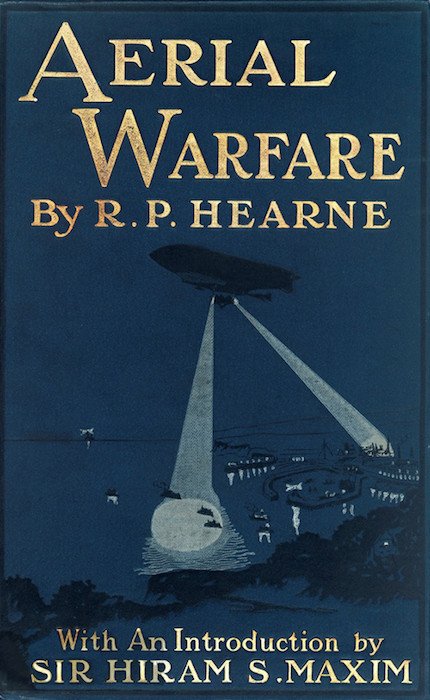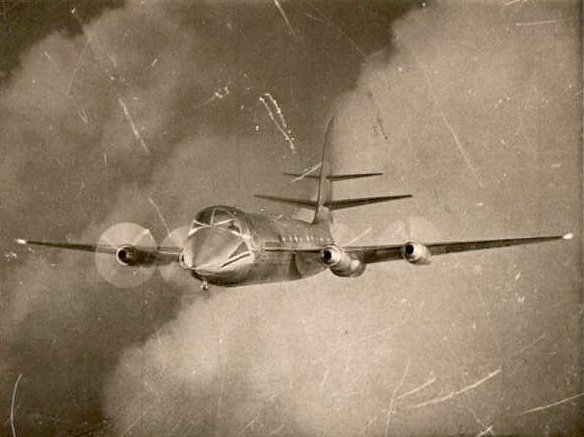[Part of a celebration of Airminded's 10th anniversary; originally posted on 15 May 2013. I've come up with some absolutely terrible titles for Airminded posts, but I like this one very much.]
Roland Garros is today mainly known for having given his name to the home of French tennis. But long before then he was famous as a pioneer aviator in both peace and war. In December 1912, for example, he set a new altitude record of 17,000 feet, while in September 1913 he made the first non-stop flight across the Mediterranean, from France to Tunisia. On the outbreak of war the following year, he joined the French Army as a pilot flying Morane Parasols and flew his first combat mission in mid-August. After some unsatisfactory initial experiments with a rifle-armed observer, Garros sought a way of firing a machine gun in the direction of flight. By April 1915 he had a Parasol equipped with the first deflector gear, which consisted of an armoured propellor with deflecting plates, the idea being that any bullets which hit the propellor would bounce off and the rest would pour into the enemy aircraft. As insane as this seems, it worked, enough: Garros shot down three German aeroplanes in a few weeks, before being forced down behind enemy lines himself and captured. His war wasn't over, however. He escaped from a POW camp in Magdeburg in February 1918, made his way back to France and then back into the air, and claimed a fourth German victim before being killed in action in October, just over a month before the Armistice.1
Despite never meeting the formal definition of five combat kills (which anyway wasn't settled until after his capture), the ovations awarded him by an adoring press had effectively made Garros the first air ace. He wasn't the first French airman to shoot down an enemy aircraft, but something about the solitary nature of his victories captured the public imagination, and set the template for the more successful aces of all nationalities who followed him. So it's interesting to discover that this narrative was prefigured by a rumour about Garros published in the British press at the very beginning of the war, which had him ramming and destroying a Zeppelin at the cost of his own life.
On 3 August 1914 (the day after the German invasion of France and the day before Britain's declaration of war), the Standard noted 'the beginning of a new era in warfare':
A report was received in London last night stating that the famous French airman M. Garros had met and engaged in mid-air a German military airship.
The daring aviator is stated to have rammed the airship and utterly destroyed it, but the results of his exploit to himself and his machine are not stated. Neither is it yet known whether the vessel was a Zeppelin, a Parseval, or one of the smaller type.2
Describing him as 'one of the most daring airmen the world has produced', already the recipient of the Legion of Honour, the Standard suggested that 'the great feat of Garros appears to have justified [France's] aerial experts' in favouring the aeroplane over the airship, unlike Germany.3 The Standard's story was reprinted in a number of newspapers, while the Daily Telegraph noted that
a number of sensational rumours have run the boulevards, and also the working quarters of the city, among them one that a Zeppelin, having crossed the frontier, was attacked by Garros, the famous French aviator, hero of the Mediterranean flight, and destroyed it, Garros himself losing his life in the heroic venture.
This rumour is very strongly supported.4
Apparently there was also an alternative version current, in which Garros 'was said to have approached a German Zeppelin on a monoplane and shot the pilot -- an officer'.5 The following day, the ramming story was 'confirmed by the following telegram from Nancy', dated 3 August:
It is currently reported here that the German Zeppelin airship which crossed the frontier was encountered when over Toul by the French aviator Garros, who in his aeroplane dashed headlong against the airship. The envelope, it is reported, was penetrated, and the mammoth airship was dashed to earth, all the occupants being killed. The aeroplane also fell, the intrepid Frenchman meeting his death. -- Exchange Telegraph Company.6
Doubts about Garros' exploit did not appear for several weeks. The Aberdeen Daily Journal noted on 20 August that 'Roland Garros's feat in attacking and wrecking a German airship has not been confirmed -- nor yet denied'.7 Then, on 25 August, the Western Times reported that a Dutch newspaper had thrown 'a damper over the whole story by saying that a friend of Garros reports he is alive and well. "He never smashed a Zeppelin," concludes the statement'.5 Which, at last, was true.
So before he ever did so in reality, in rumour Garros became the first hero of the air war for his use of a suicidally desperate tactic to destroy a German aircraft. Even his death was almost foreordained, though it happened at the end of the war, not the beginning, and while he was using Fokker-style interrupter gear, not his own deflector gear. That it happened so early in the war, before aerial combat had even taken place, let alone any martial exploits of his own, suggests that his prewar image as a daring aviator prepared him for the role of an ace when it was needed later. In effect, Garros invented the ace twice over, first as rumour, second as reality.
![]() This work is licensed under a Creative Commons Attribution-NonCommercial-NoDerivatives 4.0 International License.
Permissions beyond the scope of this license may be available at http://airminded.org/copyright/.
This work is licensed under a Creative Commons Attribution-NonCommercial-NoDerivatives 4.0 International License.
Permissions beyond the scope of this license may be available at http://airminded.org/copyright/.
- Robert Wohl, A Passion for Wings: Aviation and the Western Imagination, 1908-1918 (New Haven and London: Yale University Press, 1994), 203-10, 238-9. [↩]
- Standard, 3 August 1914, 7. [↩]
- Ibid. [↩]
- Quoted in Liverpool Echo, 3 August 1914, 4. [↩]
- Western Times (Exeter), 25 August 1914, 2. [↩] [↩]
- Hull Daily Mail, 4 August 1914, 1. [↩]
- Aberdeen Daily Journal, 20 August 1914, 4. [↩]




